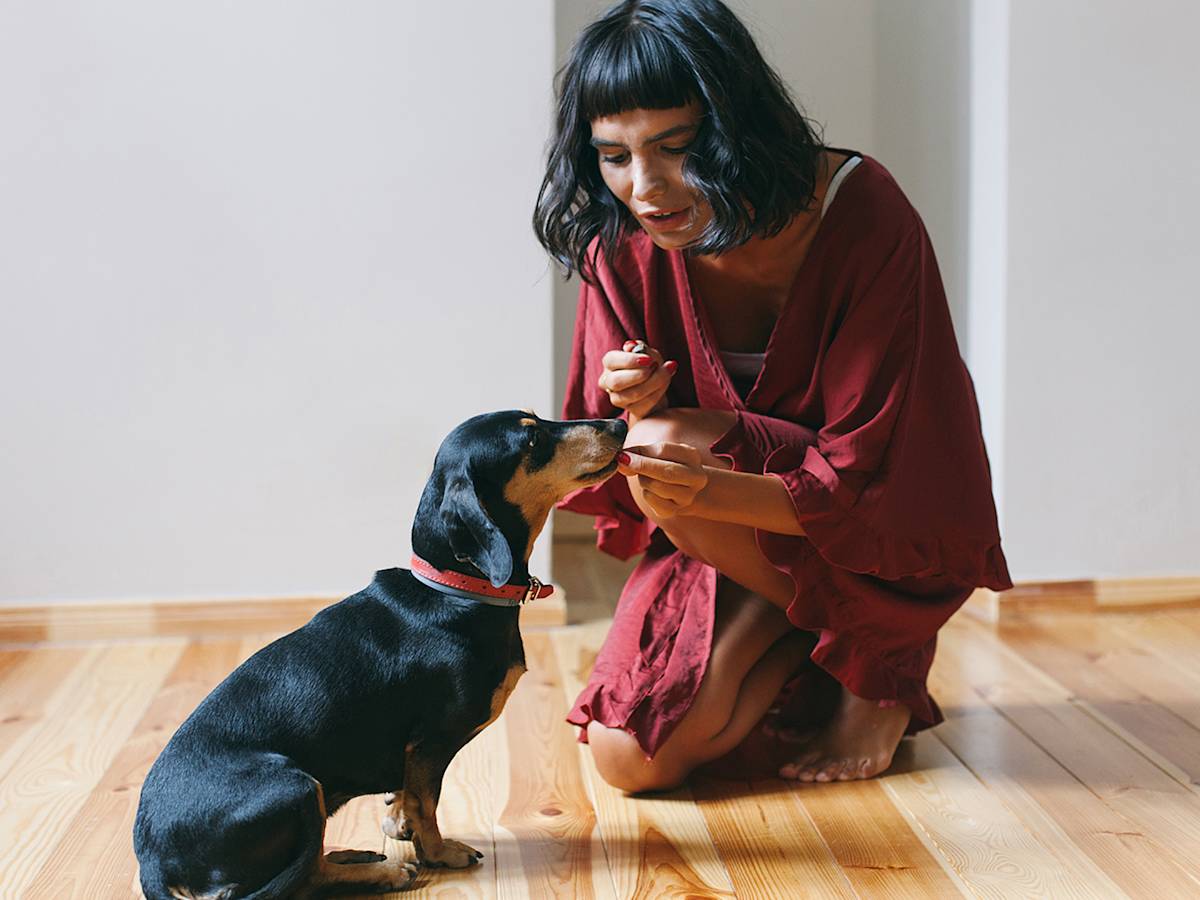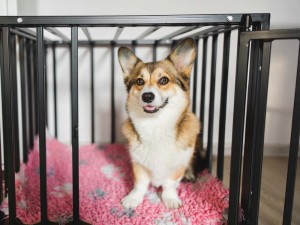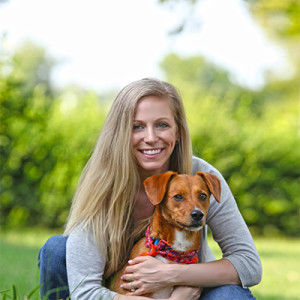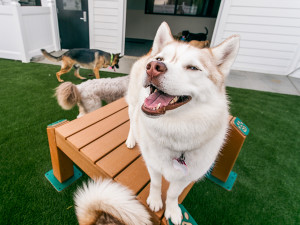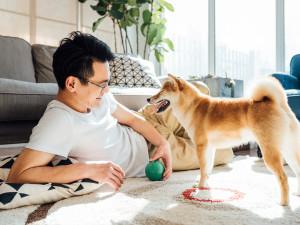Your Dog Should Do This 30-Day Training Challenge
It’s like your 30-day yoga challenge – except with way more training treats
Considering just how many 30-day challenges exist for humans trying to make any significant changes in their life and how much dogs love structure, it’s inevitable this framework was going to extend to your furry friend.
Read on for five house rules you can teach your new pet in their first month home. No pressure, though. Every dog is different and yours might need more time to hit their milestones.
The crate is their happy place
‘To crate or not to crate’ is a question that many new dog parents ponder. Try to see your pup’s crate more as a cozy den than a panic room. If your dog is a rescue, it likely found refuge in a compact, sheltered space at some point in their past life and they might associate it with trauma. You want your dog to love their crate and there are a few ways to make that happen. From day one, randomly toss treats and toys into the crate and watch as your pup goes fishing for them. Do the same with bones and food-stuffed toys to encourage them to stay a while. In time, they will associate the crate with good things.
Dogs thrive on routine. Schedule crate time so it’s predictable for your pup. Even if you plan on phasing out the crate once your dog is potty trained, it can’t hurt to make them comfortable in there overnight, when you’re out and when you just need some downtime. This is for your dog’s safety as much as it is for your stuff – teething puppies and untrained dogs can chew and choke on objects when you’re not around to supervise. And you’d probably prefer not to wake to puddles of wee near your bed.
Exception to the rule: dogs who struggle with confinement anxiety should not be crated. Barking and whining for a few minutes is to be expected, but if your dog perpetually howls or tries to escape by scratching, digging or biting at the crate, try an alternative, such as a puppy pen or baby gate. If all else fails, seek out a professional behaviourist.
They must sit up and take notice
Sitting is the first command your pup should master as it is the bedrock of basic dog obedience training and lays the groundwork for ‘stay’, ‘down’, and other commands. Hover a treat up above your pup and move it backwards, over their head. As soon as your dog’s bum hits the floor, give them a treat and say, “Good sit!” In fact, encourage extracurricular sitting; keep treats on you at all times and every time your dog casually plops down, pay up. Once your dog catches on, up the ante and ask them to sit when it’s time to eat, go for a walk and at traffic lights.
When they gotta go, they gotta go outside
Accidents happen. An adult, housebroken dog can still suffer a setback or two while acclimating to their new home. To avoid slip-ups, set up and stick to a toilet schedule. Take dogs under one year old out first thing in the morning, again every few hours (after meals, lapping up water, waking up from a nap... OK, a lot), then right before bed.
Even if you have an enclosed garden, keep your pup on a lead so they grasp that it’s potty time, not playtime. And seek out the same spot because dogs are associative learners and will take the cue that it’s time to pee. Finally, when your dog gets it and ‘goes’ celebrate the breakthrough with a hearty “Good dog!” and keep the treats comin’.
Flex their brain and brawn
Sure, your dog is adorable, and their good looks will never get old. But just like us humans, both physical and cognitive exercise is integral to dogs’ wellbeing. You could be an Olympic-level dog walker, but without mental stimulation, your pup will get bored and rebel. Don’t stress: you don’t need to tutor your dog on quantum theory. They boast 50 times more olfactory sensors than we do, so letting them stop and sniff things on walks is the simplest way to keep their synapses firing. In the split second you were eyeing the overpriced coffee shop and considering a �£4 latte, your dog caught up on all the local dog gossip – courtesy of the closest lamp post.
For canine wunderkinds (Border Collies, for example) signing up for agility classes (or DIY-ing an agility course at home) can be a great way to get out their adrenaline. Rainy day? Brain games for the win. Hide treats inside interactive toys and puzzles, compelling your pup to problem-solve to find them. They will feel like you do after you finish The Sunday Times Crossword – well, except they won’t feel the need for a celebratory Bloody Mary.
You’ll brb
Just like being attached at the hip to a new partner can sow the seeds of codependency, spending 24/7 with your dog can lead to separation anxiety. As much as it pains your pup (read: you), start by leaving them alone to take out the rubbish or grab the post, gradually increasing your absences by longer increments of time. It can be jarring for puppies in particular to transition from living with littermates to being a solo pet, but baby steps will shore up their independence.
Note: If you are concerned that your dog has separation anxiety, seek out a professional behaviourist.
